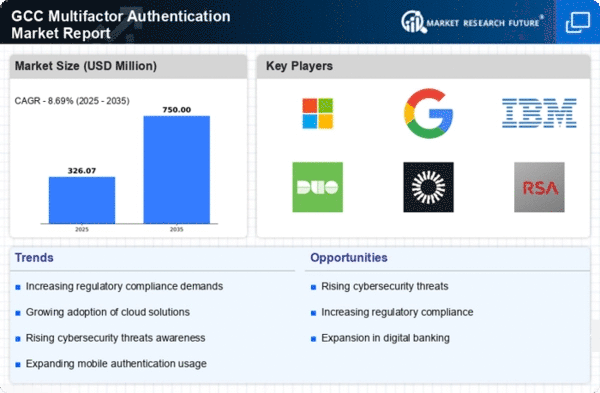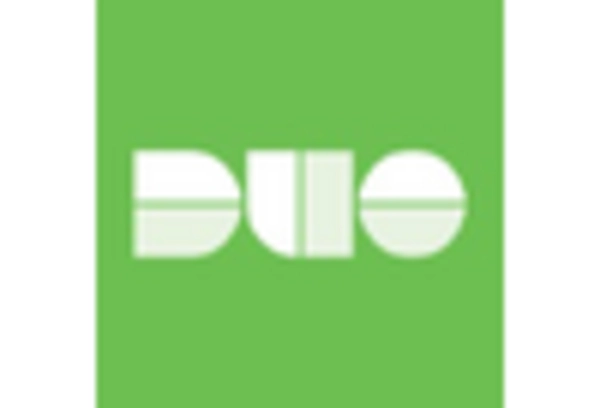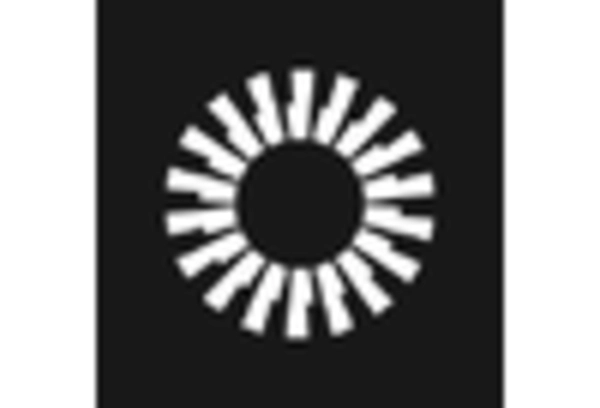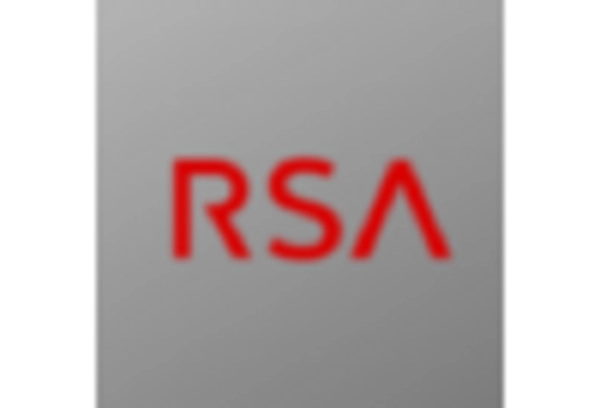This market is currently characterized by a dynamic competitive landscape., driven by increasing cybersecurity threats and the growing demand for secure access solutions. Key players such as Microsoft (US), Google (US), and Okta (US) are strategically positioned to leverage their technological prowess and extensive customer bases. Microsoft (US) focuses on integrating multifactor authentication into its broader cloud services, enhancing user experience while ensuring security. Google (US) emphasizes innovation through its advanced security features, particularly in its Google Workspace offerings, while Okta (US) is dedicated to providing seamless identity management solutions, fostering partnerships to expand its reach. Collectively, these strategies contribute to a competitive environment that prioritizes innovation and user-centric solutions.
In terms of business tactics, companies are increasingly localizing their operations to better serve regional markets, optimizing supply chains to enhance efficiency. The market structure appears moderately fragmented, with several players vying for market share, yet dominated by a few key firms that significantly influence trends and customer preferences. This competitive structure allows for a diverse range of offerings, catering to various customer needs while fostering innovation.
In October 2025, Microsoft (US) announced the launch of its new Azure Active Directory enhancements, which include advanced multifactor authentication capabilities aimed at enterprise clients. This strategic move underscores Microsoft's commitment to bolstering security measures for its cloud services, positioning it as a leader in the market. The enhancements are expected to attract more businesses seeking robust security solutions, thereby solidifying Microsoft's market presence.
In September 2025, Google (US) unveiled its latest security features for Google Cloud, which integrate multifactor authentication with artificial intelligence to detect and mitigate potential threats in real-time. This initiative not only enhances security but also demonstrates Google's focus on leveraging AI to improve user experience and operational efficiency. Such advancements may provide Google with a competitive edge, appealing to organizations prioritizing cutting-edge technology in their security frameworks.
In August 2025, Okta (US) entered a strategic partnership with a leading telecommunications provider to offer integrated multifactor authentication solutions tailored for mobile users. This collaboration aims to enhance security for mobile applications, reflecting Okta's strategy to expand its market reach and cater to the growing demand for mobile security solutions. The partnership is likely to enhance Okta's visibility in the market, attracting new clients seeking comprehensive security solutions.
As of November 2025, current trends in the multifactor authentication market include a strong emphasis on digitalization, sustainability, and the integration of AI technologies. Strategic alliances are increasingly shaping the competitive landscape, enabling companies to pool resources and expertise to deliver innovative solutions. Looking ahead, competitive differentiation is expected to evolve, with a shift from price-based competition to a focus on innovation, technological advancements, and supply chain reliability. This transition may redefine how companies position themselves in the market, emphasizing the importance of delivering value through cutting-edge solutions.

















Leave a Comment